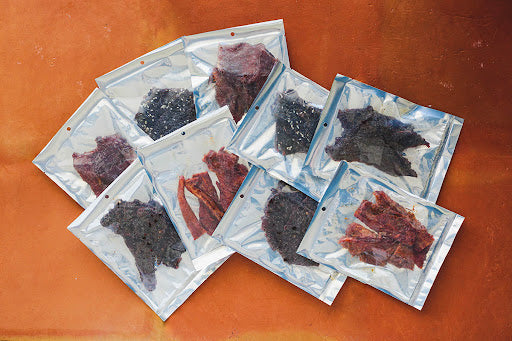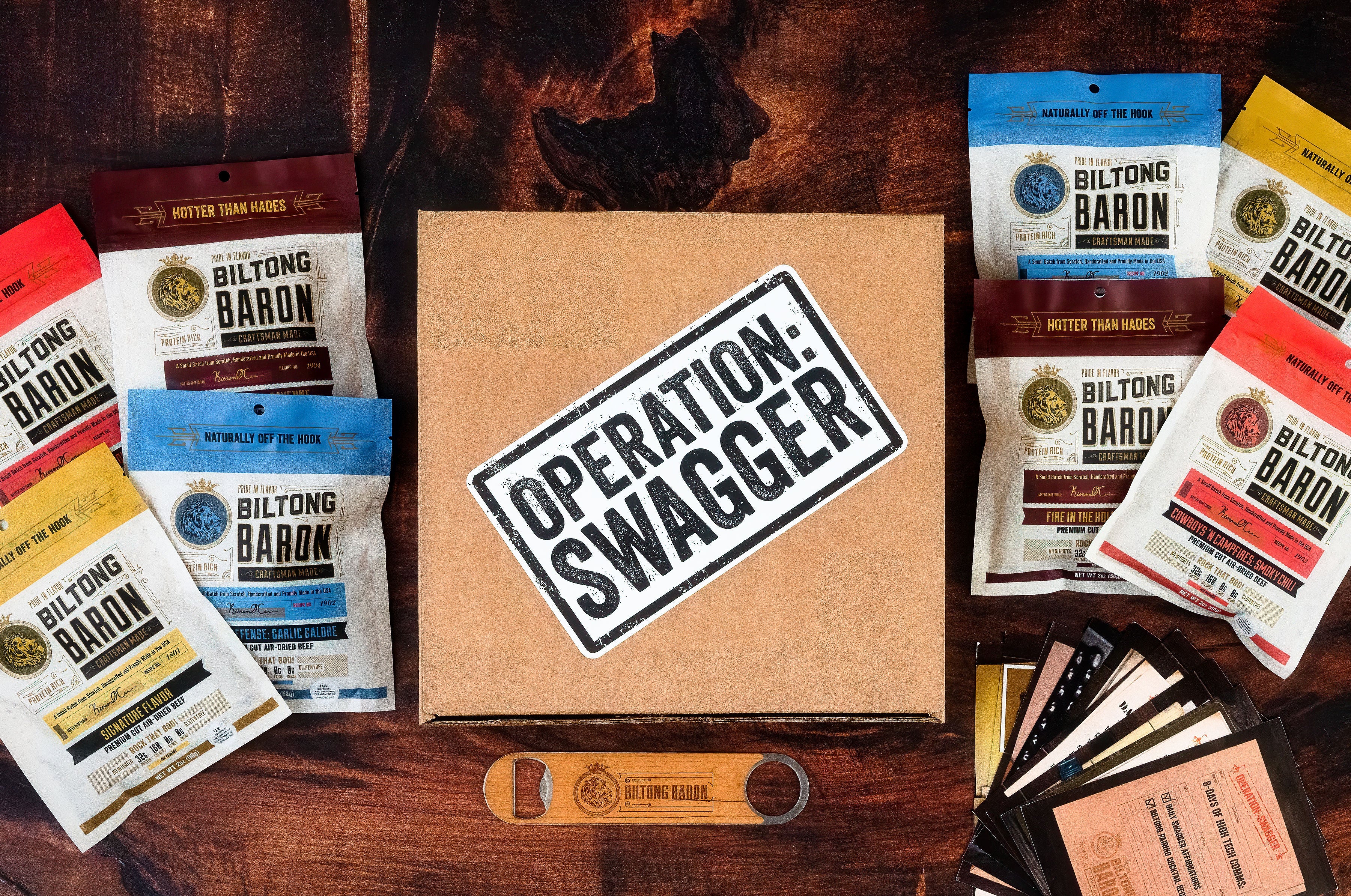-
Recently Viewed
You have no recently viewed items.
-
Featured Brands
- All Products
- About Us
- Contact Us
- Our Blog

How Is Beef Jerky Made Commercially?
While there’s nothing as satisfying as making your own homemade jerky using common kitchen devices like air fryers and smokers, you may wonder how similar the process is to commercially made, store-bought jerky.
You definitely know what beef jerky is when you make it yourself, but how is commercial beef jerky made? What is beef jerky made out of when it’s from big manufacturers?
If you want facts about how beef jerky is made, we have them in the Jerky Universe.
[Related: Where Does Beef Jerky Come From? Beef Jerky History]
How Is Beef Jerky Made?
Well, how is beef jerky made commercially? The answer really boils down to just a few simple steps.
Whether you’re in a kitchen or a factory, making delicious beef jerky is all about one core process:
- Choosing the cut of meat
- Slicing the jerky into perfect strips
- Marinating the meat
- Preparing the slices
- Cooking and dehydrating the jerky
- Packaging it up
In this blog, we’ll go over some of the specifics for each step to give you a well-rounded understanding of how beef jerky is made commercially.
Remember — while we’ll refer to only beef jerky in this article, the process is practically the same for other jerky types, including exotic jerkies.
[Related: Best Types of Jerky: Beyond Beef]
Choose the Cut of Meat
The first step is for jerky companies to choose the right cut of beef. These are common cuts for commercial beef jerky:
- Flank steak
- Top sirloin
- Rump roast
- Bottom round
- Top round
- Sirloin tip
- Round roast
It’s important to start with a lean cut of meat for the best taste and texture. Other than that, the sky’s the limit for cuts of beef.
So, what is beef jerky made out of? Ideally, manufacturers make it from, well, beef and marinade. You’ll naturally spot companies that add fillers and additives, so be on the lookout when shopping.
P.S. Cheaper jerky brands tend to use more additives, so that often explains why superb jerky is more expensive.
[Related: Where To Buy Beef Jerky]
Create Sliced Jerky Strips
Once they have their prime cut, jerky manufacturers begin the slicing process. After removing all excess, visible fat, they slice the beef against the grain, which breaks down its natural fibers and makes it easier to chew.
Many large beef jerky companies use a slicing machine for high-quality, uniform slices. Smaller operations may use a hand slicer or even a sharp knife, but consistent thickness is key for even cooking.
Begin Marinating the Meat
The next step in the beef jerky-making process is marination.
The possible flavor combinations are practically countless. From simple, traditional tastes like teriyaki to unique flavors like chile lime or even coffee, commercially made beef jerky has them all.
Jerky companies create marinades with a mix of dry spices and liquid ingredients. They then cover the beef with a marinade for enough time to have it penetrate the meat’s fibers.
Commercial beef jerky manufacturers understand that the longer they marinate the meat, the deeper and richer the taste will be in the final product. Beef jerky usually marinates anywhere from one to 24 hours.
[Related: What’s the World’s Hottest Beef Jerky?]
Arrange the Slices
The next step is to lay the marinated jerky slices in a single layer onto steel screens or shelves. Because it’s important to evenly and efficiently place the slices, the most common technique for commercial beef jerky-makers is to lay them by hand. This ensures an even, thorough cook.
Cook and Dry the Beef
Now it’s time to cook and dry those uniform beef strips. Jerky professionals use their preferred cooking method to ensure the meat cooks to an acceptable and safe temperature: 160 degrees Fahrenheit (minimum).
After companies fully cook the jerky, they begin the drying process. Drying and dehydrating the meat guarantee it becomes shelf-stable and long-lasting.
Typically, the cooking and drying process for commercial beef jerky takes anywhere from three to eight hours.
[Related: How Long Does Beef Jerky Last?]
Package It Up
The final step in how beef jerky is made is packaging. Commercial beef jerky is ready for packaging after it’s fully cooked and dehydrated.
Some places, like butcher shops or smaller meat markets, use bulk boxes for packaging. Grocery stores and gas stations generally get beef jerky snacks in individually wrapped packages.
No matter where these heavenly treats are headed, there’s one paramount matter, packaging-wise. The jerky must remain in airtight containers without oxygen. This keeps the jerky fresh, delicious and safe to eat.
Explore the Jerky Universe
How is beef jerky made commercially? Now you know! From mom-and-pop shops to massive manufacturers, the jerky-making process remains pretty much the same.
The Jerky Universe is your one-stop shop for all things jerky, and we believe knowledge is power. From beef jerky health benefits and nutrition guides to various jerky flavors and jerky types (including exotic jerky from around the world and meatless jerkies) — we’ve got you covered.
Subscribe to our newsletter and follow us on social media below! You’ll find fascinating histories, top-notch products, mouthwatering recipes and a galaxy of other info.
- Choosing a selection results in a full page refresh.









